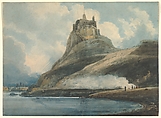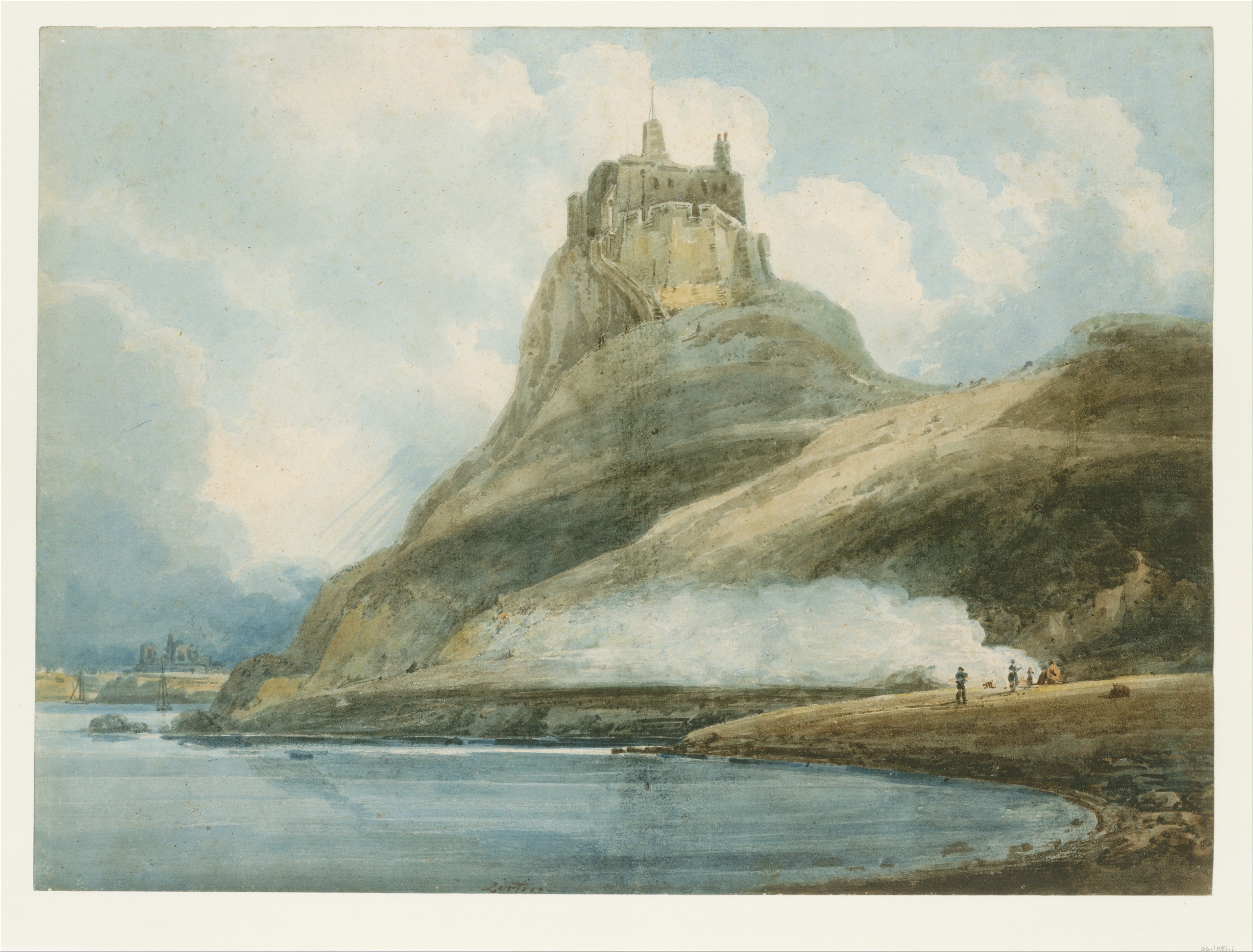Lindisfarne Castle, Holy Island, Northumberland
Thomas Girtin British
Not on view
Holy Island is dramatically situated on the coast of Northumbria and is reached at low tide by a track over the sand. This watercolor was likely based on sketches Girtin made during his tour to Scotland and northern England in the summer and early fall of 1796, and probably dates from 1797, when he exhibited ten subjects from the tour at the Royal Academy. Much influenced by J. M. W. Turner (1775–1851) and by John Robert Cozens (1752–1797), Girtin imparted a visionary grandeur to the scene. The massive basalt rock, rising above the shore and topped by a sixteenth-century castle, becomes the focus of the composition, overshadowing tiny human figures in the foreground. Relegated to the distant left background are the harbor, fishing village, and church of Saint Mary, with its extensive ruins of a priory and monastery.
Due to rights restrictions, this image cannot be enlarged, viewed at full screen, or downloaded.
This artwork is meant to be viewed from right to left. Scroll left to view more.





